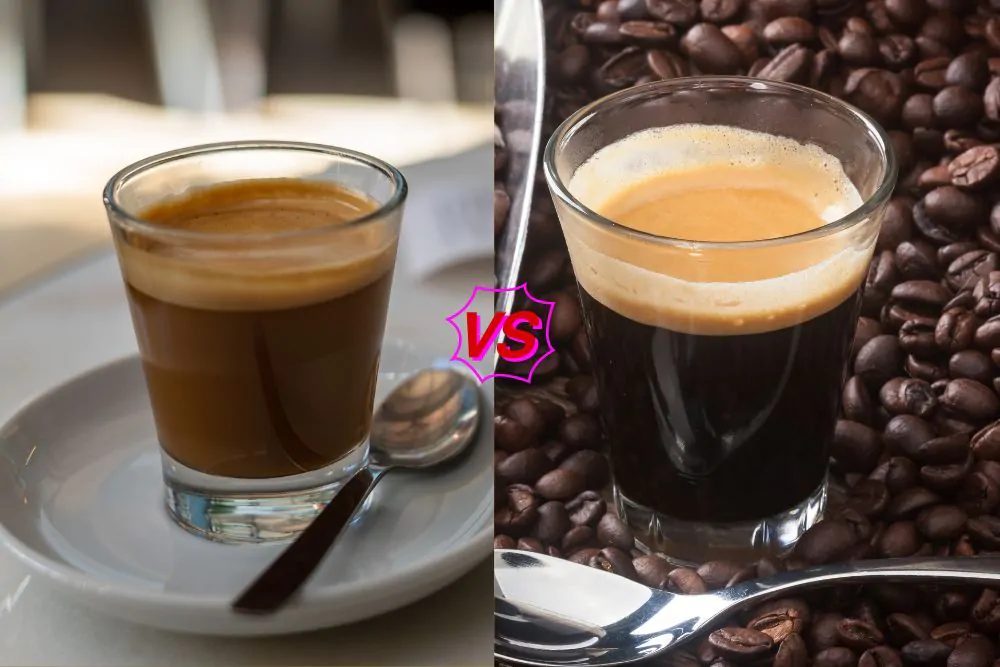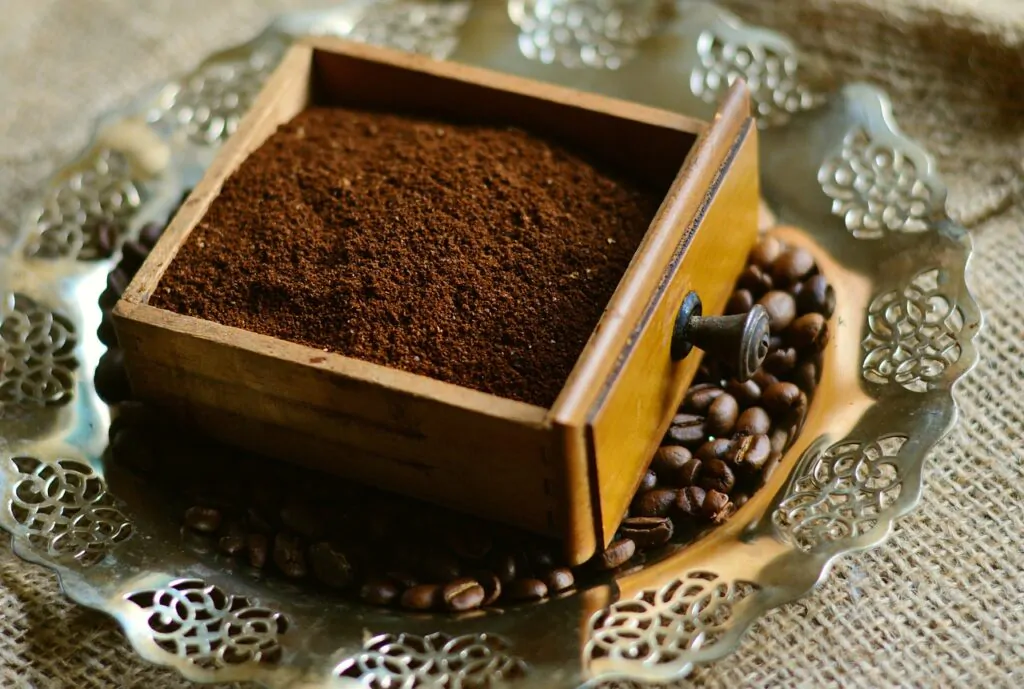Different things affect how coffee tastes, and the acidic vs bitter coffee debate has many more factors to it than you might think.

Coffee flavor can vary widely depending on the kind of coffee beans chosen, the brewing method, and the temperature of the water used in brewing. A well-brewed cup of coffee will have a perfect balance of acid flavors and bitter flavors, but if you don’t prepare it correctly, you risk tipping the balance too far in one direction or the other.
You may have wondered what factors make a cup of coffee acidic or bitter. In this article, we compare the two contrasting tastes and explain how to avoid either one.
Acidity
People often think of acidity in a cup of coffee as a negative, but in actuality, this flavor, when properly balanced, gives you a brighter roast with greater complexity of flavor. Acidity is a result of acids that occur naturally in the coffee bean, and the expert roaster knows exactly how to roast the bean to balance the acidity with the other flavors in the coffee.
A lighter roast allows the natural flavors of the coffee bean to shine through. Acid coffee leaves a somewhat sour taste on the tastebuds, and it is a result of various acidic compounds present in the coffee grounds.
Certain flavors are influenced by acids like citric acid, phosphoric acid, malic acid, and acetic acids present in the coffee beans. These kinds of acids are responsible for things like fruity or floral tones in the coffee, and they’re considered good things because they add to the complexity of flavor present in a good cup of coffee.
Chlorogenic Acids are also sometimes responsible for the acid flavor of a cup of coffee, although they degrade quickly in the roasting process and give certain light roasts a “bright” flavor.
However, when roasted, chlorogenic acids can sometimes be broken down into quinic acids in roasting, and these acids tend to make the coffee unpleasant, adding a sour or overly sharp tang to the cup of coffee.
If you liked this post, you might be interested in our round-up of the best alkaline coffee alternatives.
Bitterness
On the other hand, bitterness is an important part of a cup of coffee as well, balancing out the other, more acid flavors. Most people expect a somewhat bitter taste when drinking coffee, but an overwhelming bitterness can be a result of poor-quality coffee that has been over-roasted. As a general rule, coffee beans that have a light roast have higher acidity and lower bitterness than coffee beans in a darker roast.
Bitter compounds are generated when the coffee is roasted longer and hotter. The roasting breaks down more of the acids and generates other flavor compounds. The ability to give coffee beans a roasted flavor without a largely bitter flavor is a skill that the most talented coffee roasters have down to a science.
Remember, though, that there will always be a somewhat bitter taste to coffee, but the magic lies in getting the good bitterness in your cup. You want flavorful bitterness like roasted nuts, chocolate, or charred fruit. You don’t want burnt or overcooked flavors in your coffee which can give you a nasty aftertaste.
How Preparation Affects Your Coffee’s Taste
To get the perfect balance of acid and bitter flavors in your coffee, you need to properly prepare your coffee. Besides the roasted beans themselves, variations in the brewing process can affect the acidity and bitterness of the coffee tastes. Certain brewing mistakes can lead to the development of those bitter compounds or the sourness of the coffee that is made.
Here’s what to watch out for:
Freshness and Quality Problems

Coffee begins to degrade as soon as it is ground, so you should use your ground coffee within 4 to 6 weeks of grinding. Otherwise, the flavor is going to be less and less delicious.
Also, poor-quality coffee is not going to taste very good. Coffee beans that are improperly roasted or are marketed as “super dark roast” are going to have an overly bitter flavor, especially if they are of the robusta variety.
But, if you’re buying specialty coffee beans, and you’re still struggling, it’s probably your preparation method.
Grind Size
The grind size has a major impact on the extraction process and, as a result, on the acid-bitterness balance of the brewed coffee. If you grind the coffee too fine for your brewing method, the grounds will release all the acid flavors and take on all the bitter flavors too quickly, and you’ll end up with a too-bitter brew.
Match your grind size to your brewing method. French press coffee needs a coarser grind size while an espresso machine needs a finer grind size.
Under Extraction Or Over Extraction
Coffee that is sour is under-extracted, and coffee that is bitter is over-extracted. You see, the hot water dissolves the fragrant and tasty compounds in the coffee grounds. The acid compounds dissolve first, followed by the bitter ones.
You want to hit the sweet spot between under extraction which only dissolves acid compounds and none of the bitter ones, leading to a sour brew that has no bitter flavor to offset the acid. But, if you over-extract the coffee beans, you will end up with a coffee that is too bitter. You want to balance the two flavors to have good coffee in your cup.
If your brew is too acidic and you have sour coffee, lengthen your brew time, but if it is overly bitter, shorten the brewing time. It may take some trial and effort to find the perfect extraction time for your brand of coffee, but with time, you will develop a knack for figuring this out quickly.
Water Temperature

Water that is too hot will over-extract the coffee, leading to a bitter cup of coffee, while water that is too cool will under-extract the flavors, yielding a sour cup of coffee.
The perfect temperature for coffee brewing is just a bit below boiling, around 205 degrees Fahrenheit. If you don’t have a thermometer to measure the water temperature, just let the water come to a boil and then remove it from the heat for a minute or two to cool to the correct temperature before you brew the coffee.
The Final Word On Acidic vs Bitter Coffee
The perfect cup of coffee provides a balance of the acidic and bitter flavors present in the coffee bean. If you buy great coffee and pay close attention to the brewing process, you can have a cup of coffee with the full complexity of both good bitter flavors and the acid notes that make a cup of coffee so interesting and delicious. If you like this article, check out our guide to the best non-bitter coffee.
FAQ on Acidic vs Bitter Coffee
Is bitter coffee always bad?
Coffee will always have a bit of a bitter flavor, but the key is to make sure that the bitterness has positive flavors. Having a bitterness that is resonant of chestnuts, pecans, or chocolate is good. Having a bitterness that tastes burned or ashy is bad.
My coffee tastes bad. Should I just add more or less coffee when I make it?
This is an oversimplification of the brewing process and also of the taste of your coffee. If your coffee-to-water ratio is correct (1 or 2 tablespoons of ground coffee per 6 ounces of water) then you need to adjust the brewing process, rather than change how much coffee you’re using.

